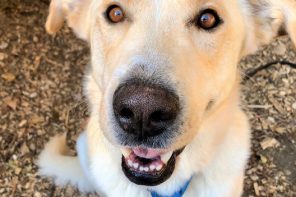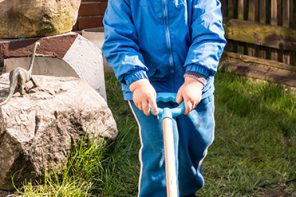During October, a photograph emerged online of Prince William gazing through the window of a Kentucky Fried Chicken near London’s Waterloo Station. The 38-year-old second-in-line to the British throne had just emerged from attending an exhibition documenting quarantined lives across the U.K. when he paused and offered a curious peek through the window of the eatery.
Naturally, the photo generated a wave of digital jollity, but it was clearly in fun — social media merrymakers commiserated with his desire for a detour into fast-food temptation. This good-natured response is certainly a testament to the genuine affection which Prince William — and his wife, formally Catherine, Duchess of Cambridge, but better known to the public simply as Kate — have generated since their fairy-tale wedding in April 2011. After too many years when the members of the royal family generated criticism ranging from being fiscally wasteful to anachronistic, it appears that the House of Windsor regained the common touch.
Indeed, you would have to go back to the World War II era of King George VI and Queen Elizabeth (the future Queen Mother) when the royals seemed like real people. Back then, the royal family reflected many British families during the nation’s darkest hours. The king’s brother, the Duke of Kent, was killed in a 1942 military air crash while the teenage Princess Elizabeth, the future queen, joined other young British women by serving in the Auxiliary Territorial Service as a mechanic and driver. When a portion of Buckingham Palace was destroyed by the Luftwaffe, the queen defiantly proclaimed, “I am glad we have been bombed. It makes me feel we can look the East End in the face.” Even the formidable Dowager Queen Mary loosened up, happily surprising hitchhiking servicemen by giving them rides in her chauffeured limousine.
But in the aftermath of the war, the royal family seemed to retreat to the distant otherworldliness that set it apart from the people. Over time, social and economic changes in Britain that chipped away at the ossified class system made the monarchy seem anachronistic. The palace goofed on occasion by misreading the public mood, most notably from the royal kibosh on Princess Margaret’s wish to marry the divorced Group Capt. Peter Townsend to the 1969 television documentary “Royal Family” that many critics felt invited too much familiarity and trivialized the queen’s role.
Tensions between the public and the crown frayed when the collapse of the marriage of Prince Charles and Diana, Princess of Wales — William’s parents — became tabloid fodder, hitting a low point with the princess’ tragic death in a car crash in a Paris tunnel on Aug. 31, 1997 and what many saw as the royals’ pitifully slow response in paying tribute to her.
Today, however, the royal family’s place within the British realm has never been more secure, due in large part to William and Kate’s ability to connect with the public. What are they doing right that hasn’t been done since the 1940s?
For starters, William and Kate appear as equals who complement each other without awkward upstaging. While George VI was never truly at complete ease in public gatherings, his stiff-upper-lip appearance and the visible confidence of his regal wife gave the impression of a couple who balanced each other. But the asymmetrical appearances of Queen Elizabeth and Prince Philip, whose public role as consort always left him several paces behind his wife, would later throw the royal dynamic off-kilter, while the visible tensions between Charles and Diana made their joint appearances painful to watch. In comparison, William and Kate work as a power couple who clearly enjoy the other’s company and the company of others.
There is also a light sense of informality that has never been seen in the royals. William has been known to leave his jacket and tie home for public appearances in sweaters and shirts unbuttoned at the collar, while Kate’s embrace of understated couture, off-the-rack dresses and coats, power pants and blazers and especially countrified looks marks a style detour from the royal protocol requiring dresses at all times of the female royals. (Kate is also known to wear the same outfit more than once, to the dismay, and delight, of royal-obsessed fashionistas.)
William and Kate have also brought a warm empathy to their public duties, which has become more apparent during their work amid the pandemic. Both have sought out Britain’s frontline workers for in-person praise and have mastered the Zoom platform when public gatherings were not possible due to health safety reasons. Their conversations in these settings are in-depth — not the gracious small-talk you would associate with earlier royal generations, but a genuine attempt to listen and learn from the experiences of others.
And the couple also knows when to politely draw the line. Kate is a rather skilled photographer and takes all of her children’s official photographs for birthdays and major milestones. She’s literally and figuratively calling the shots on the youngsters’ coverage. The three children are only sparingly allowed into the public eye, and the British media has respected royal requests for familial privacy, also something of a first. (This judiciousness makes their off-the-cuff remarks about the kids — Prince Louis’ love of food writer Mary Berry, for instance — all the more precious to their fans.)
Furthermore, William and Kate appear eager to modernize the monarchy, albeit at a pace that doesn’t seem too fast for an institution with little previous success in rapid pivoting. This is evident in their recent decision to use an online job posting for a housekeeper — and while they went on the Royal Vacancies website rather than Indeed or Craigslist, this was still a digital step forward. In October, the couple used a video phone conversation with students at a Pakistani girls’ school to play a quick game of Pictionary, which was shared on Instagram. And it doesn’t get more 2020 than that.
Perhaps the good fortune that William and Kate are enjoying is a result of perfectly aligned stars. Kerry King, the resident astrologer for The Sun, Britain’s often outrageous tabloid, recently explained, “Kate (Capricorn) and William (Cancer) are a perfect astrological match as they are opposite signs. This means they sit exactly opposite each other on the zodiac wheel and are hard-wired to be attracted to each other. Each has what the other lacks and, together, they make up the ‘whole package.’”
Or, maybe, the answer is not in the stars but in clear view: William and Kate are simply the right people at the right time for the right job.






